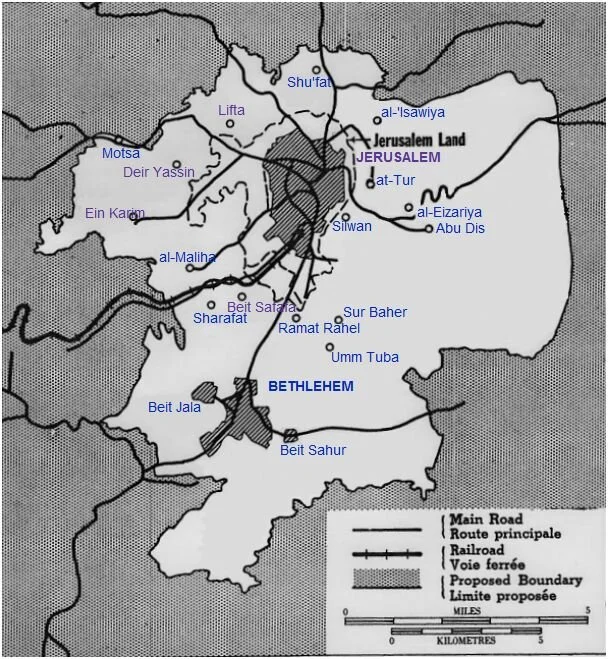In the push to take back Jerusalem Jewish fighters commit a horrible atrocity at Deir Yassin. The Arabs follow in kind. Just a few days before independence, the future Jewish state is in doubt.
THE PLOT
The Palestinian civil war was bloody, nasty, and cruel. One attack was responded with another, each massacre retaliated in kind. Ben Gurion knew that in order to declare independence, the Jews would need a defensible state. So he sent out to the Haganah what historians agree was the most difficult decision of his career: attack!
On April 9, 1948, fighters from the Irgun and Lehi attacked the Arab village of Deir Yassin, near Jerusalem. They left at least 100 people dead: defenseless men, women, and children. Some were killed in house-to-house fighting, some were outright executed. Roundly condemned by the Jewish community and its leaders, it left a permanent stain on Israel’s independence.
Deir Yassin is an atrocity that became a propaganda touchstone for everyone involved. Jews and Arabs alike changed various facts to suit their own agenda, and interpreted the outcome in ways that suited their political aims.
Deir Yassin lay along the crucial road between Tel Aviv and Jerusalem. It was essential that Israeli forces capture and hold that road in order to supply and protect 100,000 Jews trapped in Jerusalem. Capturing the road was part of a major, risky Jewish offensive to establish fortified boundaries of the Jewish state before the Arab armies would invade upon the declaration of independence. Called Plan Dalet, the offensive was bold, controversial, necessary, and ultimately successful. It had lasting consequences.
The Arabs also perpetrated atrocities upon the Jews. The day before Israel declared independence the Arabs overran the Gush Etzion cluster of kibbutzim, executing everyone who survived the initial attack.
In the final push of the Palestinian civil war, the establishment of the Jewish state was by no means assured.
THE PEOPLE
Yigal Yadin: one of the Warrior Gods, head of the Haganah and, later, Israel’s most famous archaeologist.
Hind al-Husseini: a Palestinian woman who took in 55 orphans from Deir Yassin, and become a prominent activist for women and girls’ rights and education.
THE BIG IDEAS
Israel’s critics see in Plan Dalet a land grab and ethnic cleansing. But Israel’s defenders say it was a necessary defense along what was to become the Jewish state’s borders. The state couldn’t afford to have enemy forces on its edges, and Plan Dalet was the effort to push them back.
Controversial question: was it really unreasonable to expect that in the creation of an Arab state and a Jewish state, that there would be a population transfer? Most people assumed that Arabs would move over to the Arab state, and Jews to the Jewish one. Few imagined that force would be necessary.
FUN FACTS
Deir Yassin still exists today as the Kfar Shaul neighborhood of Jerusalem, with many of original buildings still in place.
In Tsfat the Jews used a homemade mortar called the Davidka, which didn’t work well but was so loud that the Arabs thought the Jews were using an atom bomb.
On May 12, 1948, the Jewish leadership voted to declare independence on the 14th, but figured the best case scenario was a 50-50 chance of winning the war.
© Jason Harris 2020
UN partition map. Not the small Arab territory around Tel Aviv — Jaffa was to be included as part of the Arab state. Map from the Israeli Ministry of Foreign Affairs.
Location of Deir Yassin, in the purple at upper left. Source: UN General Assembly, via Wikimedia.


